The Intel Ivy Bridge (Core i7 3770K) Review
by Anand Lal Shimpi & Ryan Smith on April 23, 2012 12:03 PM EST- Posted in
- CPUs
- Intel
- Ivy Bridge
The Lineup: Quad-Core Only for Now
Very telling of how times have changed is that today's Ivy Bridge launch only comes with a single Extreme Edition processor—the Core i7-3920XM, a mobile part. There are some great enthusiast desktop parts of course, but as with Sandy Bridge the desktop Extreme Edition is reserved for another platform. In this case, we're talking about LGA-2011 which won't launch in an Ivy flavor until the end of this year/early next year at this point.
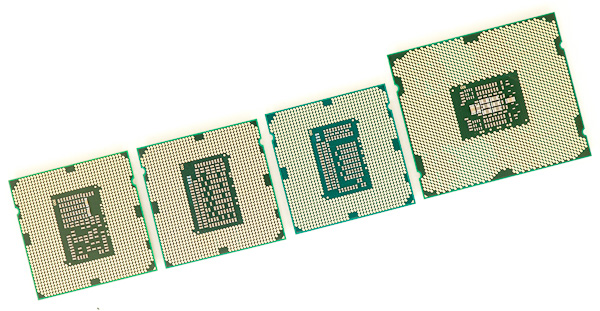
From left to right: Clarkdale, Sandy Bridge, Ivy Bridge, Sandy Bridge E
Contrary to everything I've been saying thus far however is the nature of the launch: only quad-core parts will be available first. The dual-core, and more importantly for Ivy Bridge, the ultra low voltage parts won't come until May/June. That means the bigger notebooks and naturally the performance desktops will arrive first, followed by the ultraportables, Ultrabooks and more affordable desktops. This strategy makes sense as the volumes for expensive quad-core notebooks and performance desktops in general are lower than cheaper dual-core notebooks/desktops. From what I've heard, the move to 22nm has been the most challenging transition Intel's fab teams have ever faced, which obviously constrains initial supplies.
| Intel 2012 CPU Lineup (Standard Power) | |||||||||
| Processor | Core Clock | Cores / Threads | L3 Cache | Max Turbo | Intel HD Graphics | TDP | Price | ||
| Intel Core i7 3960X | 3.3GHz | 6 / 12 | 15MB | 3.9GHz | N/A | 130W | $999 | ||
| Intel Core i7 3930K | 3.2GHz | 6 / 12 | 12MB | 3.8GHz | N/A | 130W | $583 | ||
| Intel Core i7 3820 | 3.6GHz | 4 / 8 | 10MB | 3.9GHz | N/A | 130W | $294 | ||
| Intel Core i7 3770K | 3.5GHz | 4 / 8 | 8MB | 3.9GHz | 4000 | 77W | $313 | ||
| Intel Core i7 3770 | 3.4GHz | 4 / 8 | 8MB | 3.9GHz | 4000 | 77W | $278 | ||
| Intel Core i5 3570K | 3.4GHz | 4 / 4 | 6MB | 3.8GHz | 4000 | 77W | $212 | ||
| Intel Core i5 3550 | 3.3GHz | 4 / 4 | 6MB | 3.7GHz | 2500 | 77W | $194 | ||
| Intel Core i5 3450 | 3.1GHz | 4 / 4 | 6MB | 3.5GHz | 2500 | 77W | $174 | ||
| Intel Core i7 2700K | 3.5GHz | 4 / 8 | 8MB | 3.9GHz | 3000 | 95W | $332 | ||
| Intel Core i5 2550K | 3.4GHz | 4 / 4 | 6MB | 3.8GHz | N/A | 95W | $225 | ||
| Intel Core i5 2500 | 3.3GHz | 4 / 4 | 6MB | 3.7GHz | 2000 | 95W | $205 | ||
| Intel Core i5 2400 | 3.1GHz | 4 / 4 | 6MB | 3.4GHz | 2000 | 95W | $195 | ||
| Intel Core i5 2320 | 3.0GHz | 4 / 4 | 6MB | 3.3GHz | 2000 | 95W | $177 | ||
There are five 77W desktop parts launching today, three 65W parts and one 45W part. The latter four are either T or S SKUs (lower leakage, lower TDP and lower clocked parts), while the first five are traditional, standard power parts. Note that max TDP for Ivy Bridge on the desktop has been reduced from 95W down to 77W thanks to Intel's 22nm process. The power savings do roughly follow that 18W decrease in TDP. Despite the power reduction, you may see 95W labels on boxes and OEMs are still asked to design for 95W as Ivy Bridge platforms can accept both 77W IVB and 95W Sandy Bridge parts.
We've already gone through Ivy's architecture in detail so check out our feature here for more details if you haven't already.
| Intel 2012 Additional CPU Features (Standard Power) | |||||||||
| Processor | GPU Clock (base) | GPU Clock (max) | PCIe 3.0 | Intel SIPP | Intel vPro | Intel VT-d | Intel TXT | ||
| Intel Core i7 3770K | 650MHz | 1150MHz | Yes | No | No | No | No | ||
| Intel Core i7 3770 | 650MHz | 1150MHz | Yes | Yes | Yes | Yes | Yes | ||
| Intel Core i5 3570K | 650MHz | 1150MHz | Yes | No | No | No | No | ||
| Intel Core i5 3550 | 650MHz | 1150MHz | Yes | Yes | Yes | Yes | Yes | ||
| Intel Core i5 3450 | 650MHz | 1100MHz | Yes | Yes | Yes | Yes | Yes | ||
The successful K-series SKUs are front and center in the Ivy lineup. As you'll remember from Sandy Bridge, anything with a K suffix ships fully unlocked. Ivy Bridge K-series SKUs support multipliers of up to 63x, an increase from the 57x maximum on Sandy Bridge. This won't impact most users unless you're doing any exotic cooling however.
If you don't have a K in your product name then your part is either partially or fully locked. Although this doesn't apply to any of the CPUs launching today, Ivy Bridge chips without support for turbo are fully locked and cannot be overclocked.
If your chip does support turbo boost, then you can overclock via increasing turbo ratios by as much as 4 bins above their standard setting. For example, the Core i7 3550 has a max turbo frequency of 3.7GHz with a single core active. Add another four bins (4 x 100MHz) and you get a maximum overclock of 4.1GHz, with one core active. The other turbo ratios can also be increased by up to four bins.
| Sandy Bridge vs. Ivy Bridge Pricing | |||||
| Sandy Bridge | Price | Price | Ivy Bridge | ||
| Core i7 2700K | $332 | $313 | Core i7 3770K | ||
| Core i7 2600 | $294 | $278 | Core i7 3770 | ||
| Core i5 2550K | $225 | $212 | Core i5 3750K | ||
| Core i5 2500 | $205 | $194 | Core i5 3550 | ||
| Core i5 2400 | $184 | $174 | Core i5 3450 | ||
The 3770K is the new king of the hill and it comes in $19 cheaper than the hill's previous resident: the Core i7 2700K. The non-K version saves you $16 compared to Sandy Bridge. The deltas continue down the line ranging ranging from $10—$19.
Unlike the Sandy Bridge launch, Intel is offering its high-end GPU on more than just K-series desktop parts right away. It is also differentiating K from non-K by adding another 100MHz to the base clock for K series parts. While the Core i7 2600K and Core i7 2600 both ran at 3.3GHz, the 3770 runs at 3.4GHz compared to the 3770K's 3.5GHz. It's a small difference but one that Intel hopes will help justify the added cost of the K.
Classic feature segmentation is alive and well with Ivy Bridge. In the quad-core lineup, only Core i7s get Hyper Threading—Core i5s do not. When the dual-core Core i3s show up in the coming months they will once again do so without support for turbo boost. Features like VT-d and Intel TXT are once again reserved for regular, non-K-series parts alone.


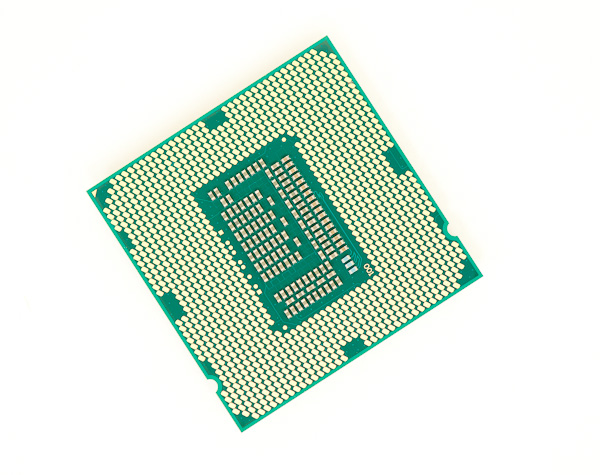
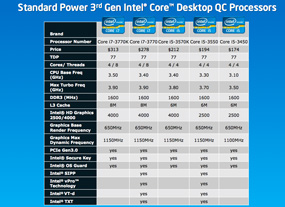
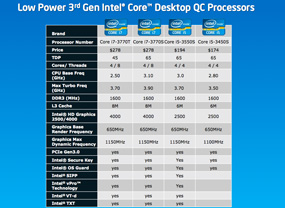
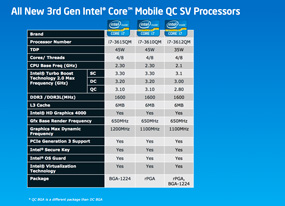
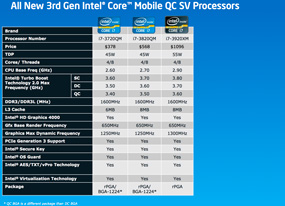








173 Comments
View All Comments
JarredWalton - Tuesday, April 24, 2012 - link
I don't think it's a mystery. It's straight fact: "One problem Intel does currently struggle with is game developers specifically targeting Intel graphics and treating the GPU as a lower class citizen."It IS a problem, and it's one INTEL has to deal with. They need more advocates with game developers, they need to make better drivers, and they need to make faster hardware. We know exactly why this has happened: Intel IGP failed to run for so long that a lot of developers gave up and just blacklisted Intel. Now, Intel is actually capable of running most games, and so long as they aren't explicitly blacklisted things should be okay.
In truth, the only title I can think of from recent history where Intel could theoretically work but was blacklisted by the game developer is Fallout 3. Even today, if you want to run FO3 on Intel IGP (HD 2000/3000/4000), you need to download a hacked DLL that will identify your Intel GPU as an NVIDIA GT 9800 or something.
And really, there's no need to blacklist by game developers, because you can't predict the future. FO3 is the perfect example: it runs okay on HD 3000 and plenty fast on HD 4000, but the shortsighted developers locked out Intel for all time. It's better to pop up a warning like some games do: "Warning: we don't recognize your driver and the game may not run properly." Blacklisting is almost more of a political statement IMO.
craziplaya21 - Monday, April 23, 2012 - link
I might be blind or something but did you guys not do a comparison between an original bluray IQ vs an encoded 1080p IQ by quicksync??toyotabedzrock - Monday, April 23, 2012 - link
Why is Intel disabling this on the K parts? And why disable vPro?jwcalla - Monday, April 23, 2012 - link
First, a diversion: "I was able to transcode a complete 130 minute 1080p video to an iPad friendly format..." Just kill me. Somebody please. Why do consumers put up with this crap? Even my ancient Galaxy S has better media playback support.It's the same story with my HP TouchPad: MP4 container or GTFO. Who can stand to re-encode their media libraries or has the patience to deal with DLNA slingers when the hardware is perfectly capable of curb-stomping any container / codec you could even conceive? Just get an Android tablet if this is the crap they force on you. Or, in the TouchPad case, wipe it and install ICS.
As for the article... did I totally misunderstand the page about power consumption? I got the impression that idle power is relatively unchanged. I must be misreading that. Or maybe the lower-end chips will show a stark improvement. Otherwise I totally miss the point of IVB.
I'm beginning to lose confidence in Intel, at least in terms of innovation. These tick-tock improvements are basically minor pushes in the same boring direction. From an enthusiasts' perspective, the stuff going into ARM SoCs is so much more interesting. Intel makes great high-end CPUs but it seems that these are becoming less important when looking at the consumer market as a whole.
Anand Lal Shimpi - Monday, April 23, 2012 - link
Idle power didn't really go down because at idle nearly everything is power gated to begin with. Any improvements in leakage current don't help if the transistors aren't leaking to begin with :)Your ARM sentiments are spot on for a huge portion of the market however. Let's see what Haswell brings...
Take care,
Anand
thomas-hrb - Monday, April 23, 2012 - link
I disagree with the testing methodology for the World of Warcraft test. Firstly no gamer of any game buys hardware so they can go to the most isolated areas in a game. Also the percentage of who can pay for one of these CPU's who would be playing at 1650x1050, would be pretty small.I've been playing WoW for a number of years and I don't care about 60fps+ because my monitor won't display it anyway. I care about minimum fps and average fps. nVidia's new adaptive vsync is a great innovation, but I am sure there are other tests that while not as controlled and repeatable is a much indicative of real world performance (the actual reason behind purchasing decisions).
One possible testing methodology you could look into is to take a character into one of the topend 25man raids. There are 10 classes in WoW and my experience is that a 25man raid will show up every single possible spell/ability and effect that the game has to offer in fairly repeatable patterns.
I agree that it is not the most scientific approach but I put more stock in a friend saying "go buy this cpu/gpu you can do all the raids and video capture and you get no lag" than you telling me that this cpu will give me 100+ fps in the middle of nowhere. There is a fine line between efficient and effective. I am just hoping that you can dial down the efficiency and come up with a testing methodology that actually produces a metric I can use in my purchasing decisions. After all that is one of the core reasons most people read reviews at all.
redisnidma - Monday, April 23, 2012 - link
Expect Anand's Trinity review to be heavily biased with lots of AMD bashing.This site is so predictable...
Nfarce - Monday, April 23, 2012 - link
Oh boy. Another delusional red label fangirl. Maybe when AMD gets their s**t together Anandtech will have something positive to review in comparison to the Intel offerings at the moment. Bulldozer bulldozed right off a cliff. And don't get me wrong: I WANT AMD to whip out some butt-kicking CPUs to keep the competition strong. But right now, Intel is not getting complacent and keep stepping their game up when the competition isn't even on the same playing court. But that's just for now. If AMD continues to falter, Intel may not be as motivated to stay ahead and spend so much R&D in the future. After all, why put the latest F1 car on the track when the competition can only bring a NASCAR car to every track?Reikon - Monday, April 23, 2012 - link
Temperature is in the overclocking article.http://www.anandtech.com/show/5763/undervolting-an...
rickthestik - Monday, April 23, 2012 - link
An upgrade for me makes sense as my current cpu is an Intel Core 2 Quad and the new i7-3770K will be a pretty significant upgrade...2.34Ghz to 3.5Ghz and the heaps of additonal tech to go with it.I could see a fair number of Sandy Bridge owners holding off for Haswell, though for me this jump is pretty big and I'm looking forward to seeing what the i7-3770K can do with the Z77 motherboards and a shiny new PCI 3.0 GPU.